November and December 2017
Well this is massively overdue! I was back on South Georgia at the end of 2017 for the fourth and final phase of the rat eradication project organised by the South Georgia Heritage Trust (SGHT). You may have heard about it recently in various press outlets. Phase Four was to set out monitoring devices at the start of the season, leave them long enough to do the job and then collect and see if there was any sign of rodents.

Commerson’s dolphins joined us for a brief while during the crossing from the Falkland Islands to South Georgia.
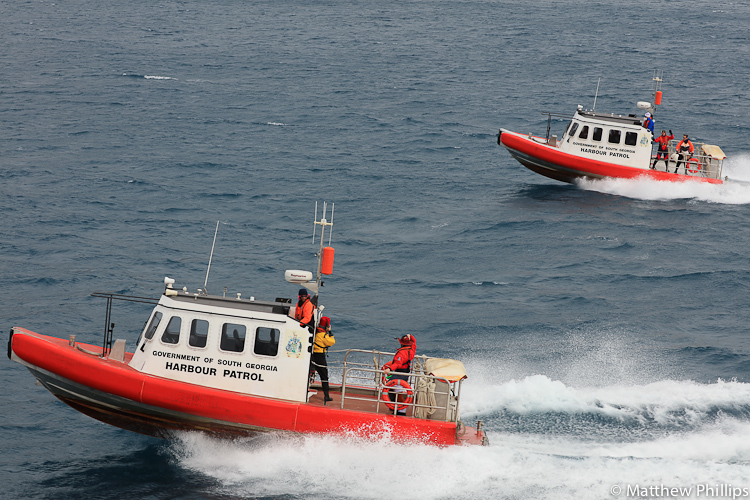
With many of ‘Team Rat’ having spent time on South Georgia previously and the new BAS team being on board we were given a warm welcome by the BAS wintering team.
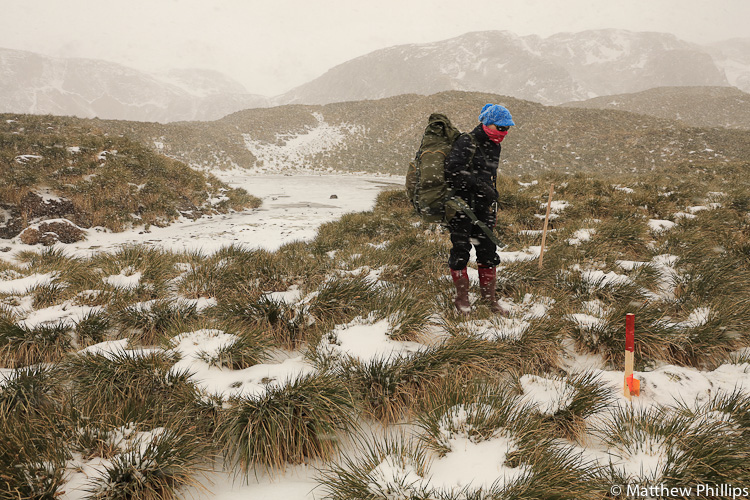
You were probably wondering what the monitoring devices were when I mentioned them at the top of the page. Quite simply a wooden stake (bottom right of the pic) with a wax tag and a square piece of plastic with peanut butter smeared inside to attract rats. Once it was numbered and in the ground we would then mark it on GPS, walk 200m and then stick another one in the ground. Becky, who was the BAS doctor the year before, was my partner each day. This was day one and felt like winter might be coming back!

Typical of the weather in South Georgia, the next day was in stark contrast to the one before. We aimed for two landings a day where possible while the Pharos moved us between each landing.
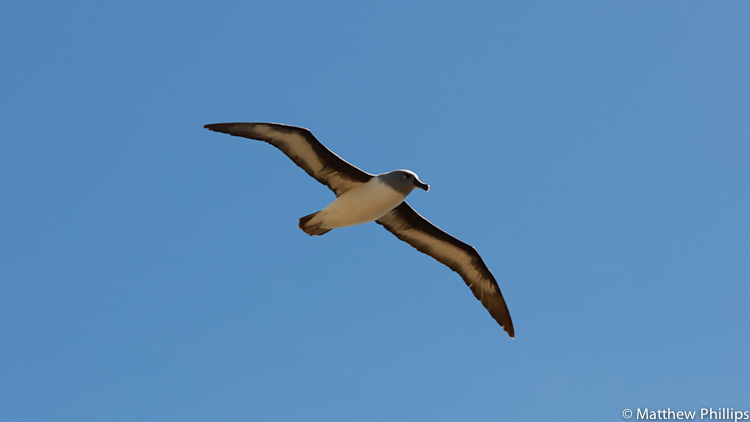
All the birds on South Georgia nest on the ground (there aren’t any trees there obviously) so the rats, that were introduced by whalers and sealers two hundred years ago, had a fairly easy time finding food. One estimate is that the eradication of the rats could lead to bird numbers increasing by 100 million as a result!
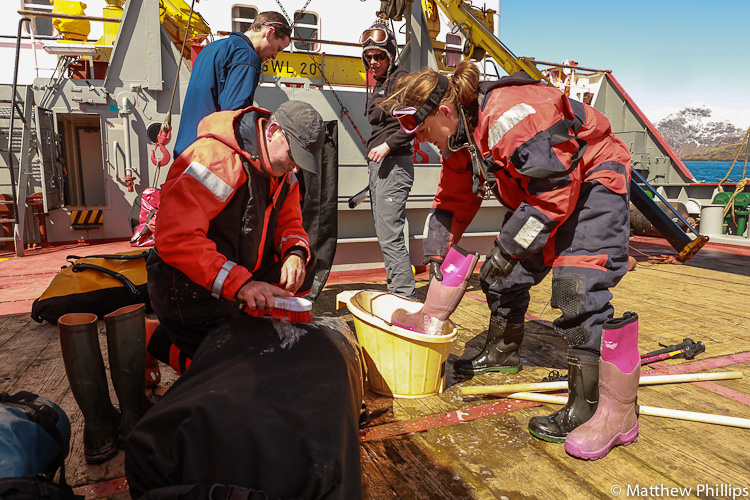
The rat eradication is part of a larger vision to return the island’s habitat to its original state before us humans arrived and started messing with the environment. This means biosecurity is taken very seriously. Transporting seeds, that are non native, from one location to another is obviously an issue. So clothing, boots, bags and anything else that might transport seeds has to be scrubbed with a special chemical at the end of each landing.
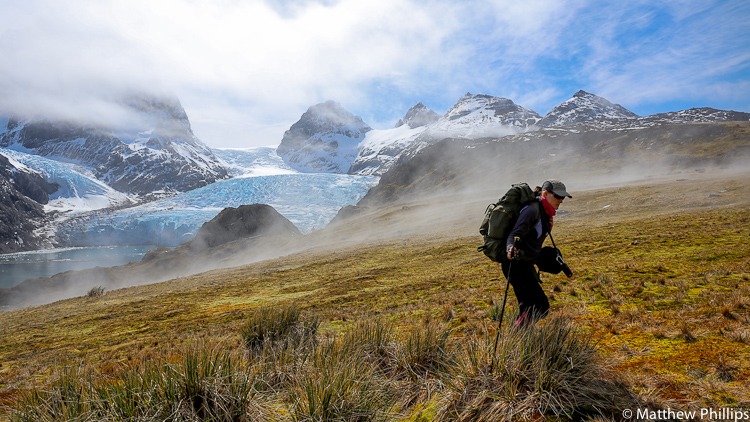
Shallop Cove, on the rarely visited south side of the island, probably ended up being my favourite place. Not hard to see why, especially with the clouds and mist making it so atmospheric.
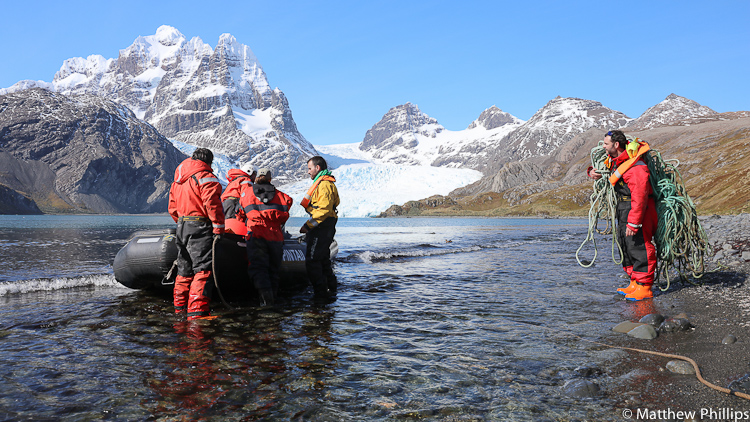
This was about the time that David Attenborough’s Blue Planet II was making a splash about plastics in the ocean. Even from this beach we found rubbish that must have drifted in from South America (or further). Sacha, who was helping Carlos look for worms as part of his PhD (yellow dry suit) lifted about 100m of rope from the beach. I found a plastic bottle and a toothbrush on the beach as well.
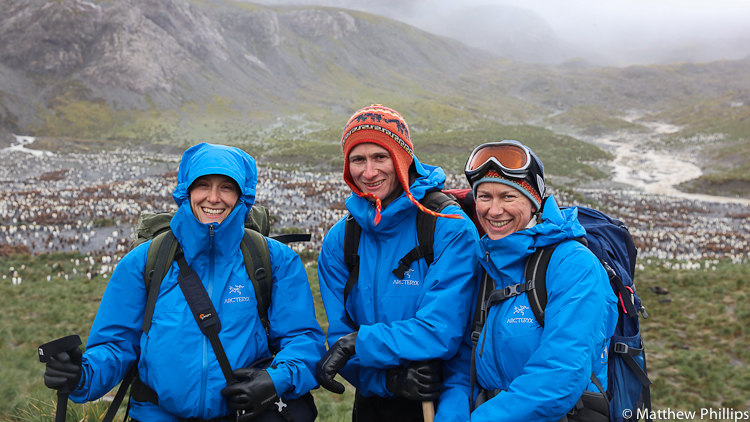
The rest of Team Rat, on the Pharos, were Dickie and Rachel (regular readers might recognise them) and there were another team working out of King Edward Point with the help of the BAS boats to get around.
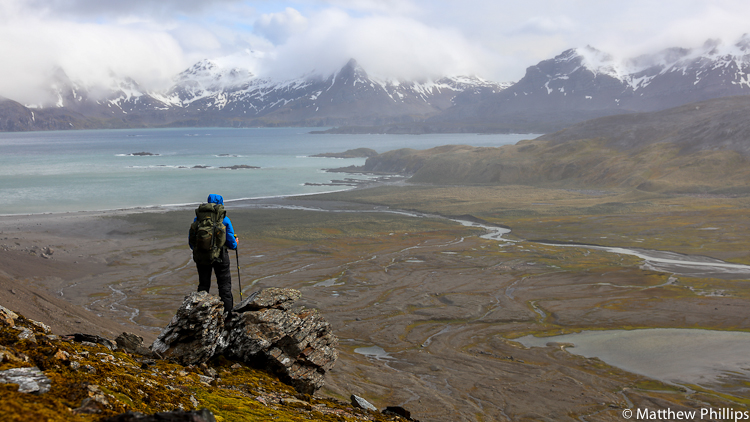
Some days involved one pair working immediately around the landing area and the other pair having to walk overland to another site. We took turns in doing this. This was one day Becky and I headed overland to get to a monitoring site. By the time we were walking back up this slope we had 40mph winds in our face with driving hail stinging our faces – might not sound that bad but it’s actually quite painful.
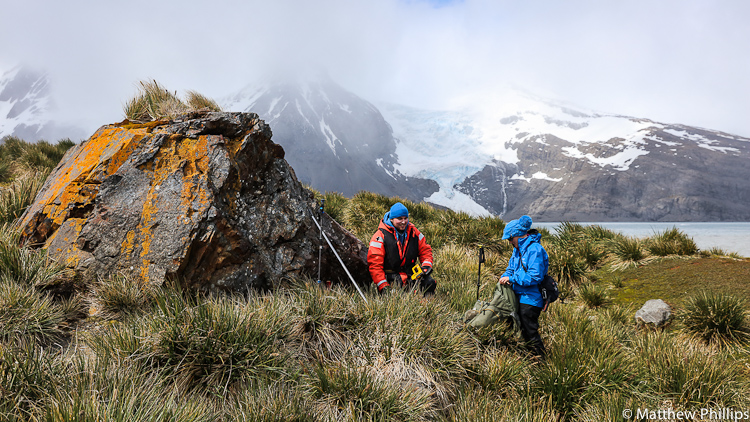
This is King Haakon Bay where Shackleton landed before doing his crossing of South Georgia at the end of his epic.
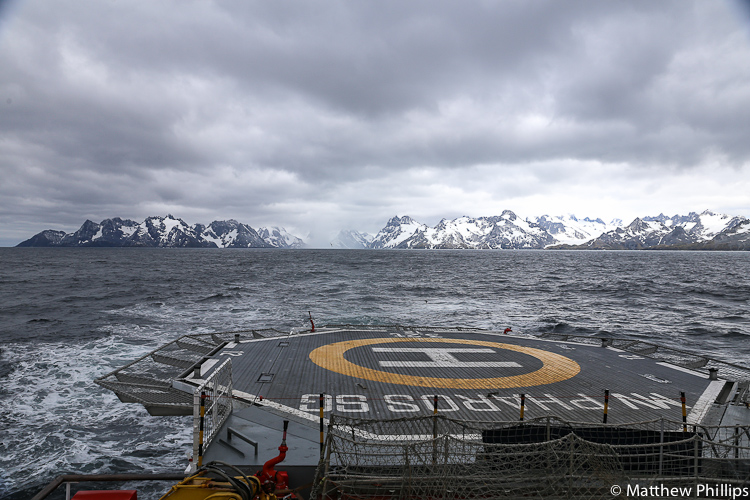
The south east end of the island is home to Drygalski Fjord (just left of centre) which is notorious for strong winds. We did manage to venture in briefly but it’s not always wise to hang around.
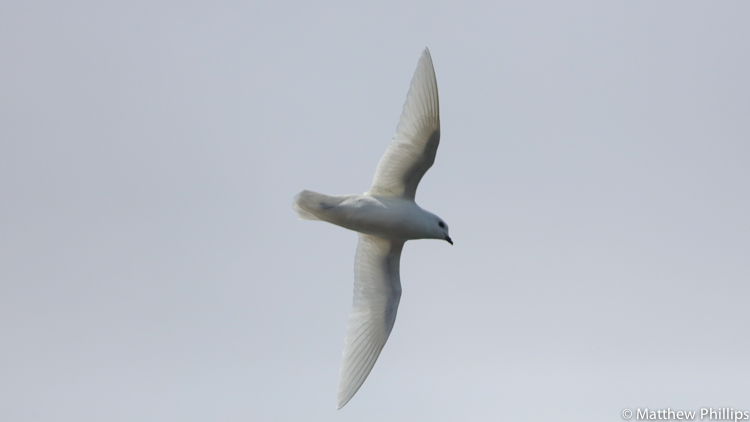
Snow Petrels are one of the birds I didn’t manage to get a photo of during my time with BAS. While the background sky isn’t great I’ll tick it of the list! (Editor’s note: Matthew’s bird knowledge has improved tremendously thanks to his time on Team Rat)
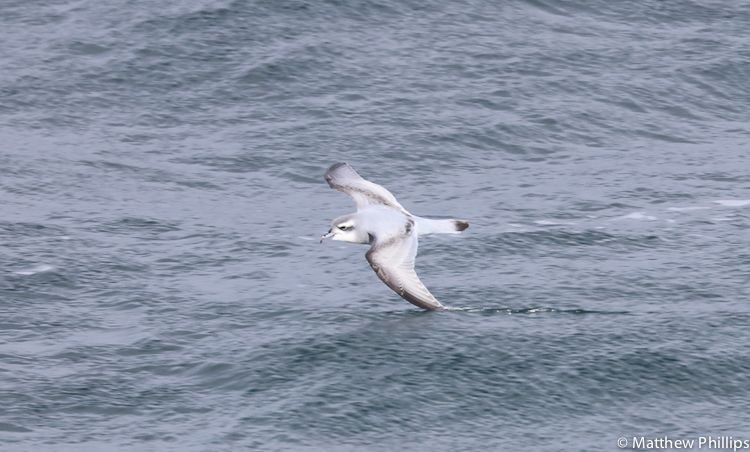
Prions are tricky ones to capture with the camera as they are only really out an about when it’s windy and they move slightly erratically. I took hundreds of pictures, trying to get the perfect shot but it’s a real challenge. Managed to get this one with its wing skimming the water.

Gold Harbour is a favourite landing site for the expedition ships and their passengers. Lots of king penguins and a hanging glacier with mountains behind… not hard to see why then.
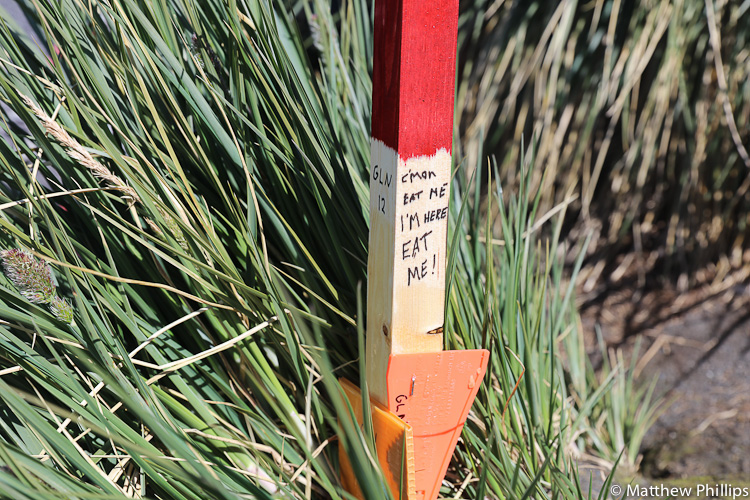
Knowing the passengers might come across some of the monitoring devices I decided to write a few film quotes on the stakes.
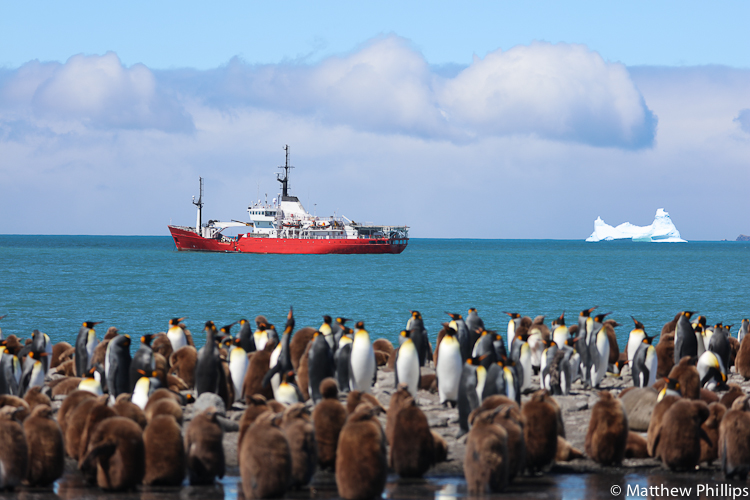
Pharos waiting off shore while we work around the penguin colony. Almost looks Mediterranean with the water and sky colour.
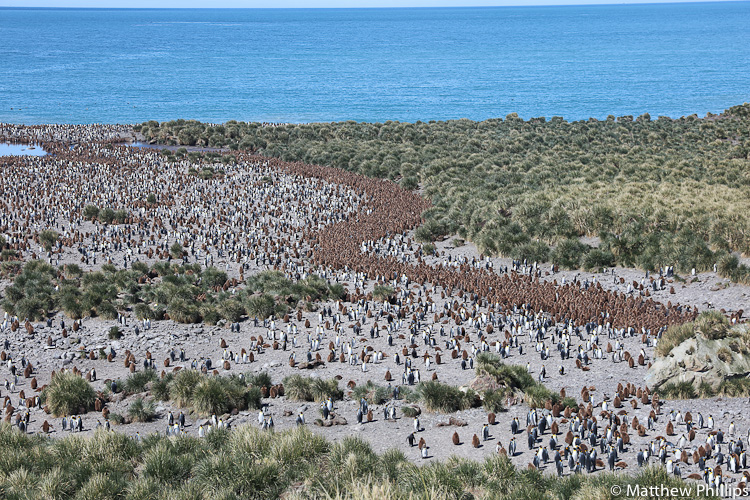
From an elevated position you can clearly see the king penguin chicks packed together like a flowing river, not seen that before.

I still admire the skuas and particularly the giant petrels for how they survive on anything that’s dead (or close to death!)

Looking back at the bridge of the Pharos from the bow while we had another quick look in Drygalski Fjord. While almost all the rock in South Georgia is rubbish for climbing on, the rock on the north shore of Drygalski is gabbro, which climbers and walkers who have been to the Cuillin mountains on Isle of Skye should be familiar with. Climbers have a love-hate relationship with it as it’s still really grippy when wet but it also has a magnetic quality to it, which messes with your compass!
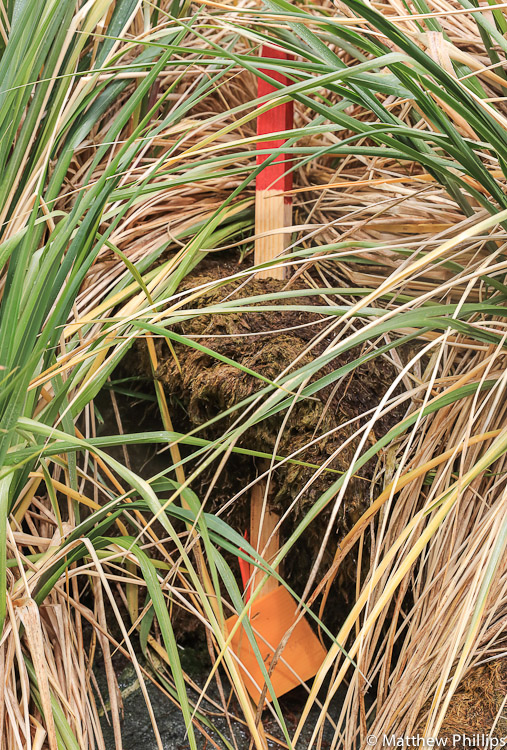
One of my more creative stake placements… I’m not sure who had to retrieve this one but I’m guessing they were cursing my name when they did haha.
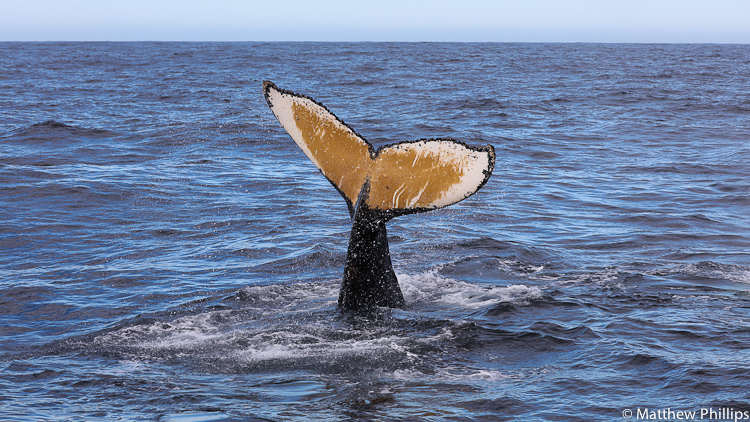
We were visited a few times by humpback whales during the evenings while we were further out to sea.
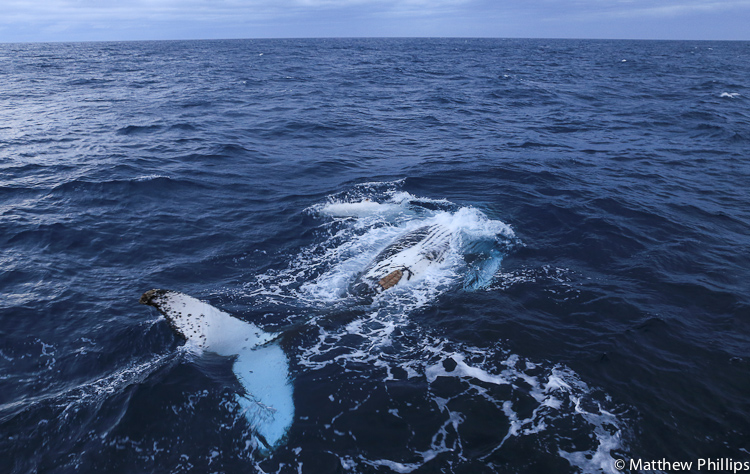
Apparently the brown area on the underside is the whales vagina… which would be San Diego in German (obviously not, but if you’ve not seen Anchor Man that one has just gone clean over your head).
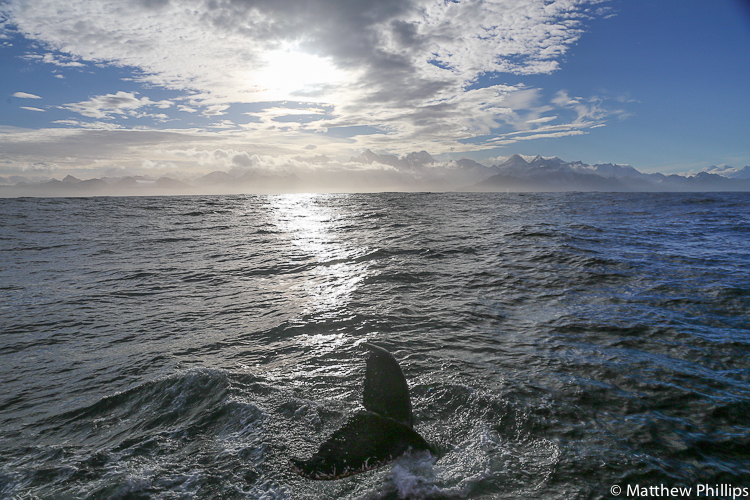
After the initial excitement and frantic running around the deck of the ship, getting any photo of a whale that I could, I gathered my thoughts and decided to wait for the ultimate shot – a whale with the island in the background.
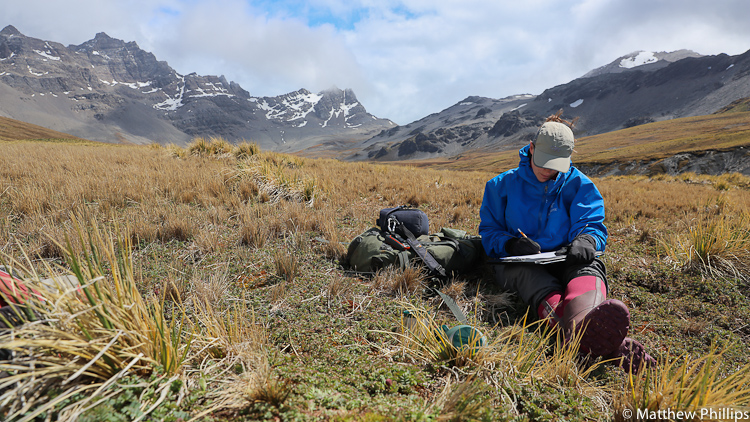
At the end of each landing we would try to fit in a bird survey. The idea is that in future years the same can be done and should help show how the bird numbers are recovering. This was often my favourite part of the day as I could get my flask of coffee out, sit down and look for birds.

Sometimes the only way to get to the larger, open, vegetated areas was to follow a stream from the beach until you could find a slope to scramble up.
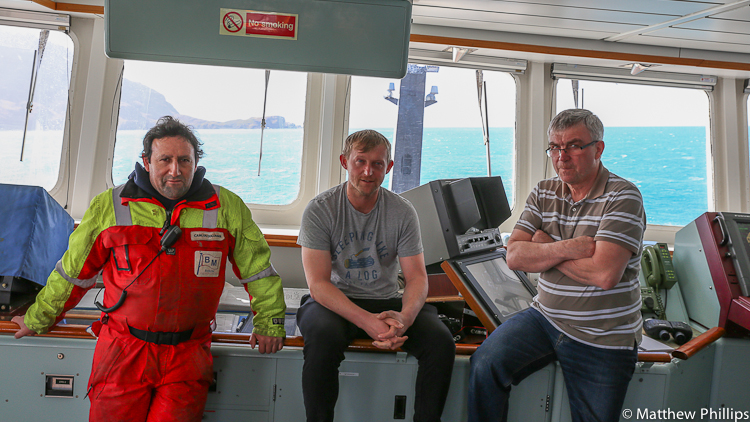
The three deck officers (Carlos, Patrick and Roman) waiting for the wind to drop before we can get alongside at KEP. Pretty rare to see all three on the bridge at the same time (one of them would usually be sleeping).
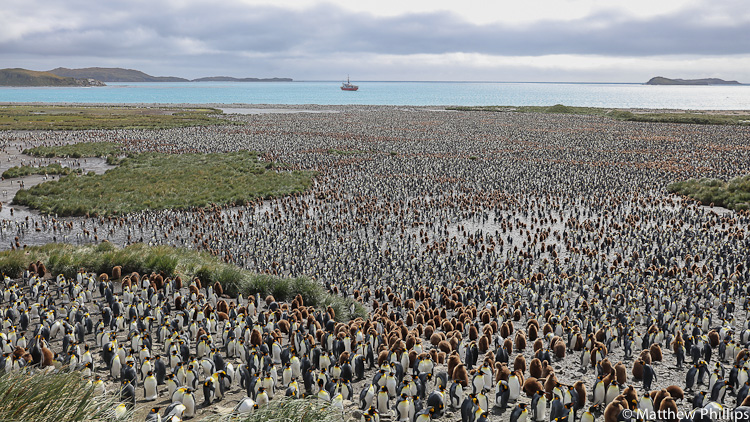
The second largest penguin colony on South Georgia is at Salisbury Plain, home to a couple of hundred thousand king penguins.
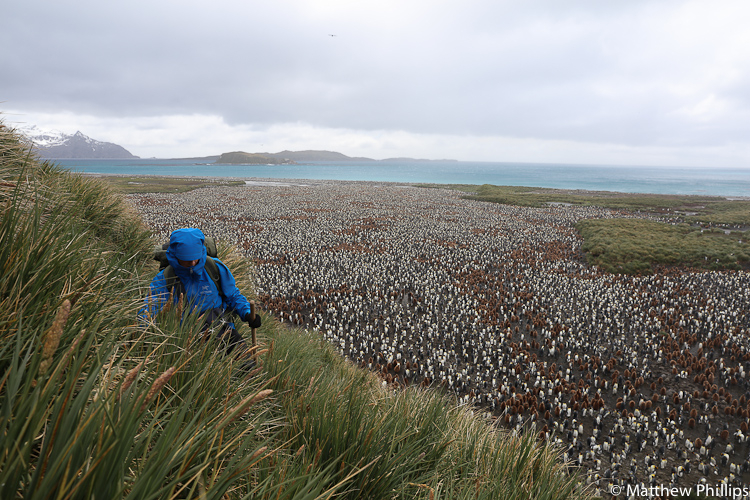
This turned out to be another windy day. By the time we walked to the colony the wind had increased significantly. We carried on working as we knew we would have to wait for the wind to drop before being picked up anyway.

Back in the military days (that’s post Falkland Islands conflict in 1982, until 2001) they looked at putting in a runway on the island. One location they considered was Salisbury Plain. I think this is some leftover kit from when they had a look at it for stability. I’m glad they never put one in.
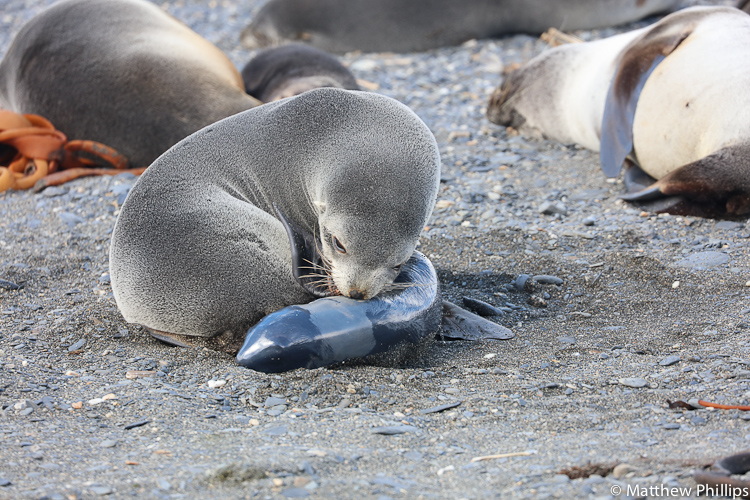
It was still very windy by the time we got back to the landing site so there was no chance of a pick up. We found a sheltered area next to a stretch of beach and held up and waited for the wind to drop. During the wait I noticed a little bit of black stuff coming out of a female fur seal. I’d never seen one give birth before this. I’d often just missed the event by minutes I think. Every cloud has a silver lining.
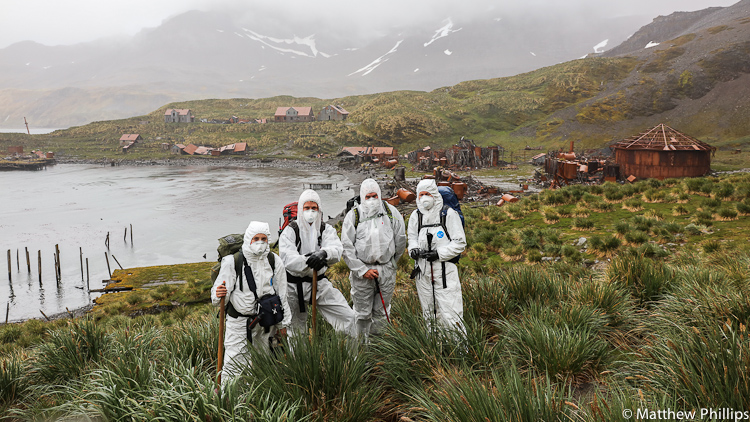
One of the places I was looking forward to seeing was Prince Olaf’s whaling station. This station was closed about 20 years before the likes of Leith, Stromness or Husvik. It’s illegal to go within 200m of the whaling stations (with the exception of Grytviken, which has been heavily sanitised of dangerous materials) without a permit from the South Georgia Government. There are all three types of asbestos in the whaling stations so great care is taken to minimise the risk. We all had to do a one day training course, specific to South Georgia, on the dangers of asbestos before leaving the UK. Andy (second from the right), who was the government observer, offered to take a picture with myself and the other three. I said I would just lie and say that was me second from the right.
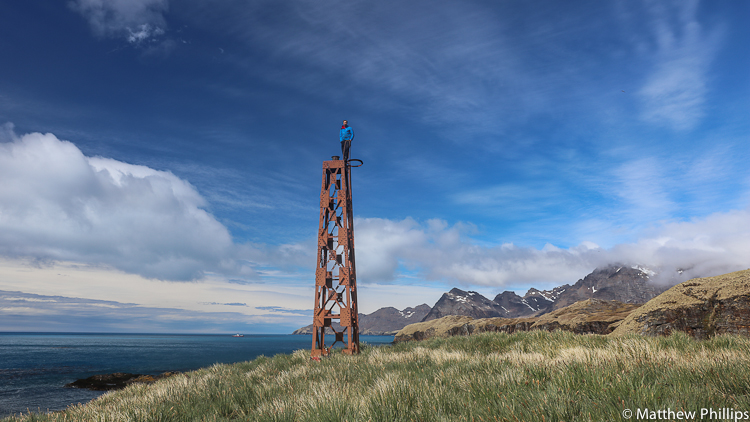
I think this was a light at the entrance to the harbour. I couldn’t resist climbing up and getting Becky to take a pic. Yes it should be her name in the bottom right of the pic, but as I’m currently in Iceland I can’t change it – but having my name on it doesn’t change the fact the picture is her property, even though it was taken on my camera (bit of copyright knowledge for you there).
If you didn’t see anything about the project in the news recently then I’m glad to report the news is good! Phase Four wrapped up with the collection of the monitoring devices by early April and no signs of rats were found. While I was only on the project for two months (some of the guys did all 6 months of Phase Four, nevermind all the people involved Phases One, Two and Three in previous years). I’m really proud to have been involved in such a worthwhile project.
As things stand I have no South Georgia trips on the horizon, I may even have had my fill of the place! It will always hold a special place in my heart though. The idea of never going back is a sad one, but I’m sure that’s not the case and I’ll find myself back there at some point.
Yes, I did say I was in Iceland earlier and it wasn’t a typo. I’m currently on my way to Greenland for a three week expedition. I won’t say much just now but I will say that it involves boating, sea kayaking and a TV crew. I promise to have a blog about it before the end of June! I should probably do one to explain how much fun I had in Scotland this winter – my fist one since 2009!
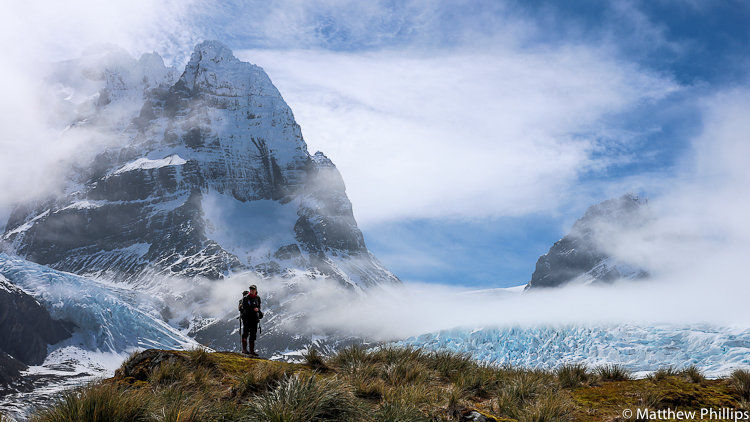
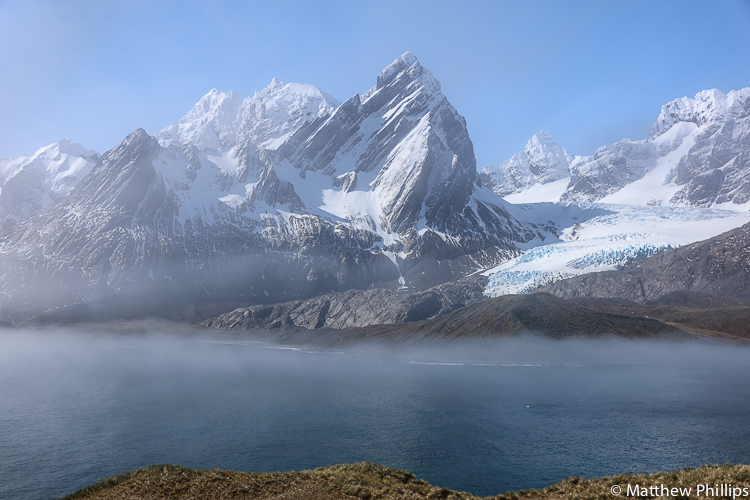
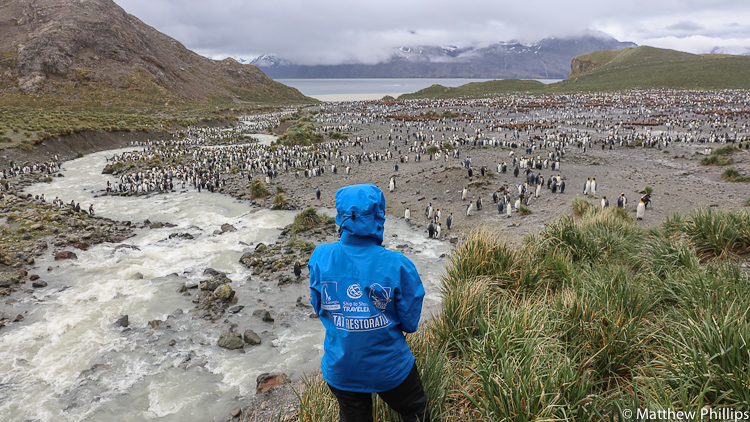
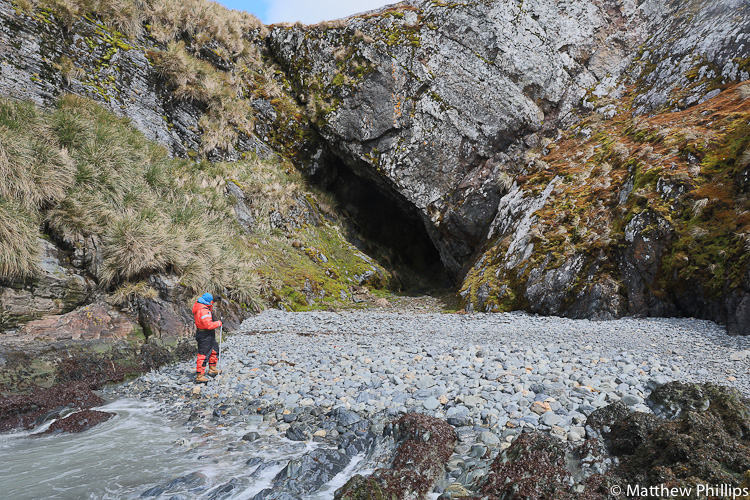

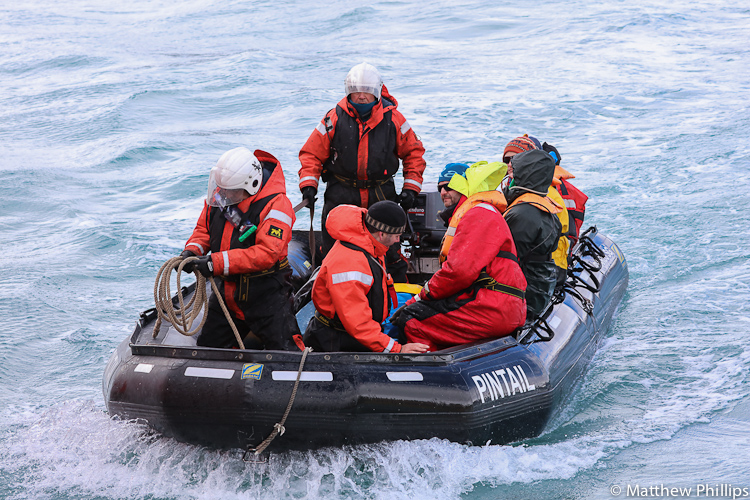
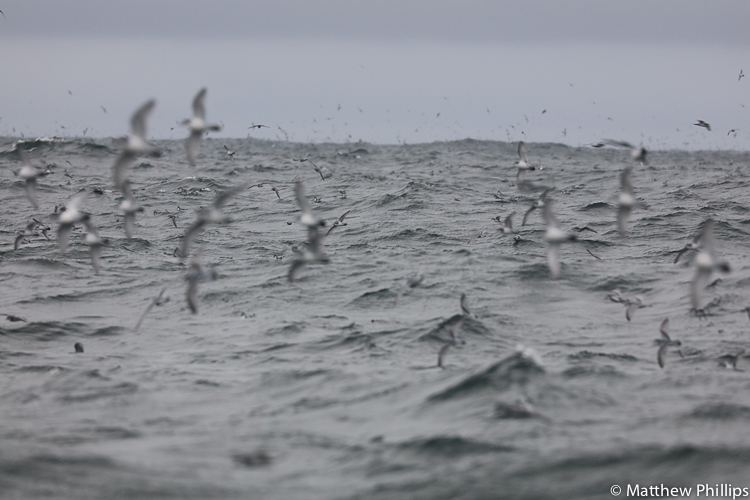
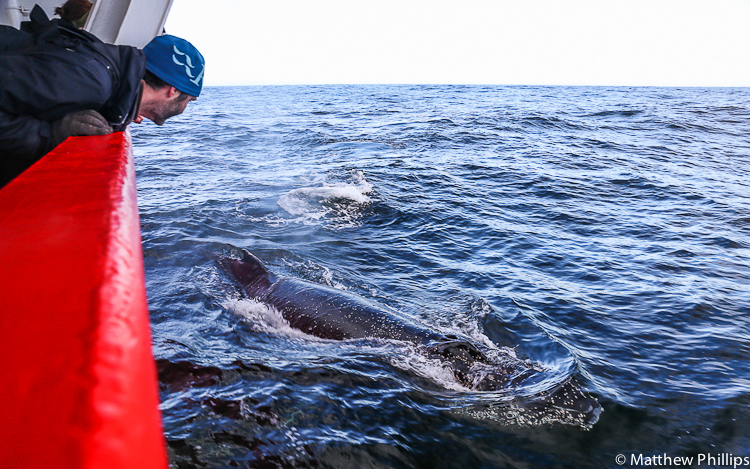


 Follow
Follow

2 Comments
Beautiful photos. I can almost feel the crisp air here in Southern California.
Will go to S. Georgia for first time in early November on Lindblad/Nat.Geo trip. Am getting on in years and want to experience it while we can. Sea sickness be damned.
Lucky man! Hope you enjoy it… can’t see how someone wouldn’t.